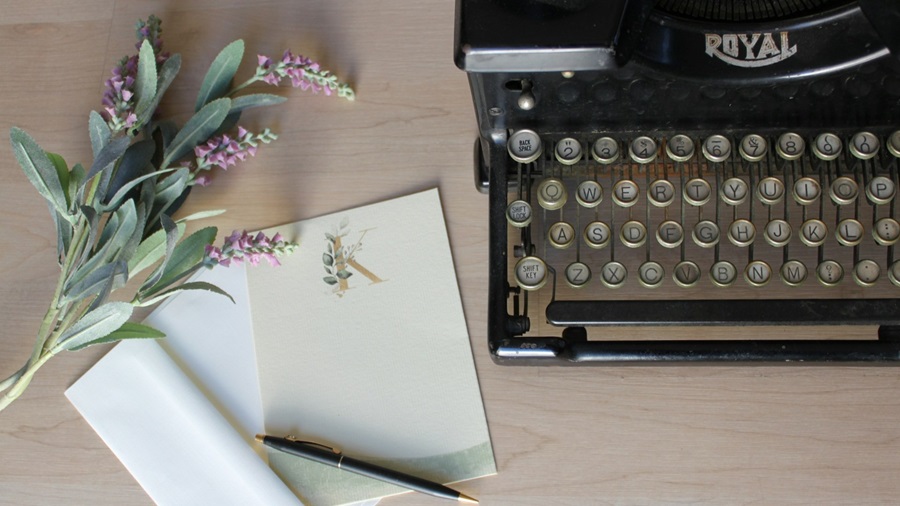Ah editing: arguably the least favorite step of writing your own book. Some of us struggle to actually sit down and write. Others blast out a heart-pounding first chapter and then struggle to get into our groove. But for the most part, writers write because we love the process of turning an amazing idea into a first draft. Once you’ve finished an entire manuscript, congratulations! You’ve just joined an exclusive tier of writers—but you’ve also reached the most intimidating step of all: turning a first draft into a second draft. Because editing a book is no small feat.
Personally, I Field Questions about Editing All the Time
I’m a professionally trained editor who’s worked in the tech space for about a decade. Because I’m also a writer, I get lots—and I mean LOTS—of questions about editing a book after you’ve written it. Or requests of whether I edit other people’s books (a resounding nope from me).
For the record, you don’t have to be a professional editor to take your book to the next level. But that doesn’t make editing easy. A writer friend asked me once how to write a first draft that didn’t need a heavy editing process. Could a meticulous outline or a slower writing pace eliminate the need to rewrite sections of her books? Unfortunately . . . I had to burst her bubble. Because there is no skipping the tedious slog of editing your first draft, no matter how talented of a writer you are.

This might be the least glamorous part of writing, but editing a book doesn’t have to be the worst experience of your fledgling career. To help you get started, here are seven loose steps to guide you along your editing journey.
Step #1: Take a Break from Your Project
Yes, you read that right. If you’ve just finished a book and are wondering how to start editing, the very first step is to let your book breathe for a while. And by a while, I’m talking a minimum of sixty days. Longer if you can swing it.
Here’s the thing about editing a book you just wrote: you’re going to do a way better job if you’re less emotionally attached to that first draft. It helps to kind of forget what you wrote so you can go in with fresh eyes that will see which parts are amazing and which parts suck. Walking away from your book for a few months will also give you renewed energy when you return for the editing process.
While you’re taking a break, this is a fantastic time to start a brand new writing project. Or to occupy yourself with something completely non-writing related. Whatever feels most rejuvenating to you.

Step #2: Reread Your Entire Book
Once you return to your beloved book, it’s not quite time to break out the chainsaw. First, block out a quiet weekend to yourself and grab a cozy blanket and lots of snacks. Then read your whole book from start to finish. I’d recommend doing this read-through in as few sittings as possible. If this step stretches out for weeks or months, you’re going to lose focus and your gumption to jump into the editing process. So schedule a specific time to get your head back into this project.
As you’re reading, make notes in the margins or a list of necessary changes. What scenes don’t work for you anymore? What sections feel boring or slow? Are there plot holes or dangling storylines that you forgot to tie off? Is there a character you lost interest in writing? Now is the time to identify your manuscript’s weaknesses and brainstorm how to make your story better.
But beware! You’ll be tempted to jump straight into copyediting your manuscript and finessing individual sentences. That step comes later. First, you need to look at your book as a whole so you can make sweeping course corrections before you get tripped up in the minutiae.
Step #3: Make a Plan
Once you’ve read your entire book, it’s time for a battle strategy. You already have a list of changes you want to make. Now it’s time to zoom out even further. Are you happy with your main character’s growth arc? Does your story start and end in a satisfying place? Is your book well-paced throughout? Are there any parts of your plot that feel too convenient? Now is the time to make decisions and write a comprehensive list of the big problems you need to solve.
Next, compile all the feedback you’ve received on your manuscript and decide which suggestions you’d like to incorporate. (Side note: if you don’t have ANY feedback on your book, now is a good time to get some! Check out my article on how to receive feedback to get started.) Not all feedback you’ve received is worth listening to, but if multiple readers have told you that a scene is confusing or one of your characters needs work? That pattern is worth listening to.
Last but certainly not least, now is the time to check your word count. In the publishing industry, 80,000 words is considered the sweet spot for a debut novel. Even if you’re planning to self-publish, the standard word count number of your genre is still a good benchmark to know since these are the lengths readers are used to consuming. Also, cutting down your book will only improve its pacing.

Step #4: Tackle the Big Picture Problems First
FINALLY it’s time to grab that manuscript by the horns! Start by getting the big substantive edits out of the way, though none of this has to happen in chronological order . . .
- Cut scenes or entire chapters that don’t move your plot forward.
- Trim long, boring sequences that drag down the book—especially unnecessary travel.
- Fix inconsistencies.
- Remove characters who aren’t contributing to your plot or whose “job” in the story could be handed off to a better character.
- Clean up the structure of your story. If one of your three acts is way too long or not long enough, your climax falls flat, or your big reveal isn’t properly set up, now is the time to fix these larger structural issues.
- Rework your main character’s arc if needed.
- Rewrite sections that don’t work anymore. Sometimes you’ll read scenes early in your manuscript that could be written SO much better because you’ve improved.
- Cut long-winded exposition.
- Make sure the beginning of each chapter dives into the action.
- Cut long wind-down sequences at the end of chapters and use cliff hangers.
- Simplify parts of your story that feel overly complicated. If your character could make a decision that would save you three chapters of unnecessary drama, now is the time to change that.
- Fix any point of view problems. It’s okay to have multiple points of view in your story, but especially if this is your first book, fewer POVs (three or less) is a good idea. Be sure that each scene is happening from only one point of view.
This step of editing a book is also the ideal time to do more research. Are there aspects of your world-building, a character’s occupation, or a historical time period that are inaccurate or just don’t make sense? If you made a note to research the history of plumbing so you could make a scene more convincing, now is the time for that.
Step #5: Start from the Beginning to Edit the Small Stuff
Once you’ve tackled the big stuff and you’re closer to your target word count, now is the time to get into the weeds of editing paragraphs and sentences. I’d highly recommend editing your book from beginning to end once you reach this stage. This is your time to truly finesse the language and execution of each scene. And if you find entire paragraphs that could be cut, don’t be shy. Ax it.

This is also the time to pay close attention to your writing. Keep an eye out for redundancies, places where you could be showing instead of telling what happened, clunky dialogue that nobody would ever say, or passive voice. Editing a book is all about making your text engaging, crystal clear, and easy to understand. If you can choose one great word to describe something instead of five words, do it.
Also, give your reader some credit. As you’re going through your manuscript on a micro level, remove any descriptions that are completely obvious. Readers are smart. They don’t need every little thing spelled out for them, and now is the time to root out places in your book that are patronizing and unnecessary. Generally speaking, less is more when it comes to writing.
Step #6: If You Obsess Over Anything, Make It the First Chapter
I hate how true this fact is, but nothing will make or break your book like the first chapter will. If your first chapter is confusing or cliché or—heaven forbid—totally boring, the rest of the book won’t matter. Because readers will DNF your story.
Some important aspects of a first chapter:
- Choose a juicy opening line to launch us into the story.
- Introduce your main character fast and give us a reason to root for them. It helps to introduce at least two characters so we can watch them interact, but beware of introducing too many characters in Chapter 1.
- Have a hook. What big problem leads to the rest of your plot? How can you introduce this problem in a dynamic way?
- Include your inciting incident. What choice leads to the rest of the story? What are the stakes involved in that choice?
- Set the mood and tone of your story. Your first chapter is the place to establish time period, genre, setting, and the atmosphere with tasty tidbits rather than pages of exposition.
- Make your reader curious enough to keep reading. There’s a fine balance between frustrating your reader with too few details versus fire-hosing them with so much information that they lose interest, but err on the side of less is more.
It’s likely that you’ll need to rewrite your first chapter many, many times. But once you land on the right version, this chapter will be what sells your book and gets readers turning pages.
Step #7: Polish, Polish, Polish
The final step is copyediting your manuscript AT LAST! Many amateur writers jump straight to this final step because the urge to spruce the tiny details of your writing is so strong. But if you jump straight to copyediting without working through the previous six steps, you’ll end up with a book that’s too long and still suffering from larger plot issues.
Now that the big stuff and the mid-level stuff is resolved, here are things to keep in mind as you copyedit:
- Fix all typos, grammatical errors, and punctuation problems.
- Remove all redundant or unnecessary words.
- Remove as many adjectives as you can. A strong verb is worth WAY more than any adjective.
- Use only one space after each period. A quick find and replace will fix this issue in 30 seconds.

I’d also recommend reading your book out loud to track down glaring typos, confusing sentences, and wordy dialogue. Even if you have no knowledge of grammar, I’m still a huge believer in at least attempting to polish your book on your own before enlisting a professional copyeditor to help you. But hey, there’s no shame in leaning on an expert to make your book the best that it can be. Once the dust settles, your official second draft will be complete. Yay!
Bonus Step #8: Do It All Again
Not to be a buzzkill, but books need multiple rounds of editing before they hit bookstore shelves. My current project that I’m shopping around to agents is on draft number four. All four rounds of editing were tough in their own way, but I can say with confidence that my book is shockingly better than when I first finished it. And yes, I took good long breaks between each new wave of edits. Writers need breaks too. ❧




